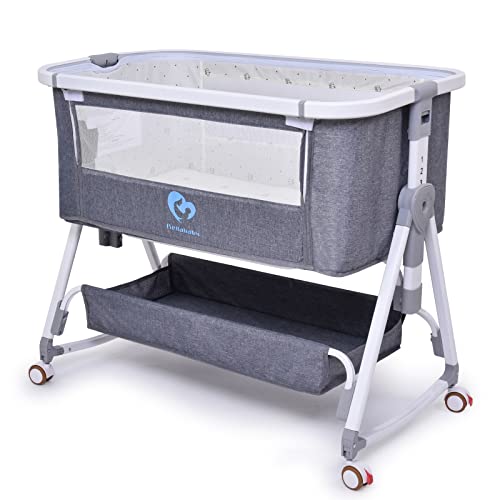4 Dirty Little Tips About Cots To Tots Industry Cots To Tots Industry
Cots To Tots: A Comprehensive Guide for Parents
The journey from cots to tots is an essential transition period for moms and dads as their kids grow. This phase not just involves physical modifications but also emotional and developmental milestones that both moms and dads and children experience. In this short article, we will look into the different aspects of this shift, offering you with important insights, suggestions, and frequently asked questions that will help you navigate through this crucial stage of parenting.
Comprehending the Transition: Cots to Tots
The term “Cots to Tots” often describes the shift from crib sleeping to toddler beds, normally taking place in between the ages of 18 months and 3 years. Throughout this phase, kids experience significant physical and cognitive development, and moms and dads play a critical function in ensuring their kids adapt well to these changes.
Key Milestones in the Cots to Tots Transition
Physical Growth: As toddlers end up being more mobile, they typically grow out of the confines of a crib. Indications that a child is prepared to transition include climbing out of the crib or no longer fitting conveniently in it.
Cognitive Development: Cognitive abilities are flourishing during this time, and children begin to assert their independence. They might reveal choices, desire to pick their sleeping arrangements, or show interest in developing regimens.
Emotional Growth: Emotionally, toddlers begin to establish a sense of security and autonomy. They may experience nighttime fears or separation stress and anxiety, highlighting the need for a cautious method throughout this shift.
The Importance of Choosing the Right Toddler Bed
Choosing the right toddler bed is a vital step in the cots to tots shift. Here are a couple of factors to think about:
- Safety: Look for beds with rounded edges, sturdy building, and steady guardrails to avoid falls.
- Size and Height: Choose a bed that's low to the ground to make it simple for toddlers to climb up in and out individually.
- Material: Select non-toxic finishes and materials that can sustain the wear and tear of young child life.
- Design: Aesthetics matter too! Choose a design that matches the child's character and matches the room design.
Recommendations for a Smooth Transition
Here is a list of useful suggestions to reduce the transition from cots to toddlers:
Prepare the Environment: Create a safe sleeping environment by eliminating sharp objects and using safety gates as essential to restrict access to stairs or other areas.
Develop a Routine: Establish a constant bedtime regimen to help your child feel secure. Activities such as reading, singing lullabies, or bath time can signal that it's time for sleep.
Motivate Independence: Allow your kid to be associated with picking their bed and bedding to foster a sense of ownership and enjoyment about the new change.
Address Nighttime Fears: Offer comfort items such as stuffed animals or blankets that help your kid feel protected.
Be Patient: Transitioning can require time. If your child struggles at initially, assure them that it's a natural part of growing up.
Frequently Asked Questions (FAQs)
Q1: When should I transition my kid from a crib to a young child bed?
The majority of kids transition between 18 months and 3 years, depending on their individual preparedness. Try to find indications like climbing out of the crib or revealing interest in a big-kid bed.
Q2: What if my kid refuses to oversleep the brand-new bed?
It's common for toddlers to resist change. Establishing a bedtime routine, offering convenience items, and providing praise for any development can assist reduce the shift.
Q3: Are young child beds safe?
Yes, as long as they satisfy security standards. Look for Cots Sale like guardrails, low height, and tough building to ensure safety.
Q4: How can I avoid my child from falling out of bed?
Select toddler beds with guardrails and location cushions or soft carpets on the floor to soften any potential falls.
Q5: Is it required to buy a brand-new bed, or can I use a mattress on the floor?
While a mattress on the flooring might work briefly, a young child bed supplies stability and security features that enable for more self-reliance during sleep.
Last Thoughts
The transition from cots to tots is a significant stage in parenting that sets the phase for further development and development. By understanding the changes that take place in your kid's physical, cognitive, and emotional health and wellbeing throughout this time, parents can much better support their kids through this crucial leap. With mindful planning and persistence, this transition can be a favorable experience for both parents and kids. Stressing security, self-reliance, and routine will not just pave the method for effective sleep practices however will likewise encourage young children to flourish in this exciting brand-new chapter of their lives.
Summary Table: Key Points for Cots to Tots Transition
Aspect
Factors to consider
Physical Growth
Growing out of the crib, mobile enough to climb up in/out of the bed
Cognitive Development
Asserting self-reliance, showing choices
Emotional Growth
Experiencing nighttime fears, separation anxiety
Choice Criteria
Safety features, comfort, aesthetics
Practical Tips
Prepare the environment, develop a routine, motivate independence
By following the above guidelines and listening to your kid's needs, transitioning from cots to tots can be an enriching experience that helps foster independence and development.
